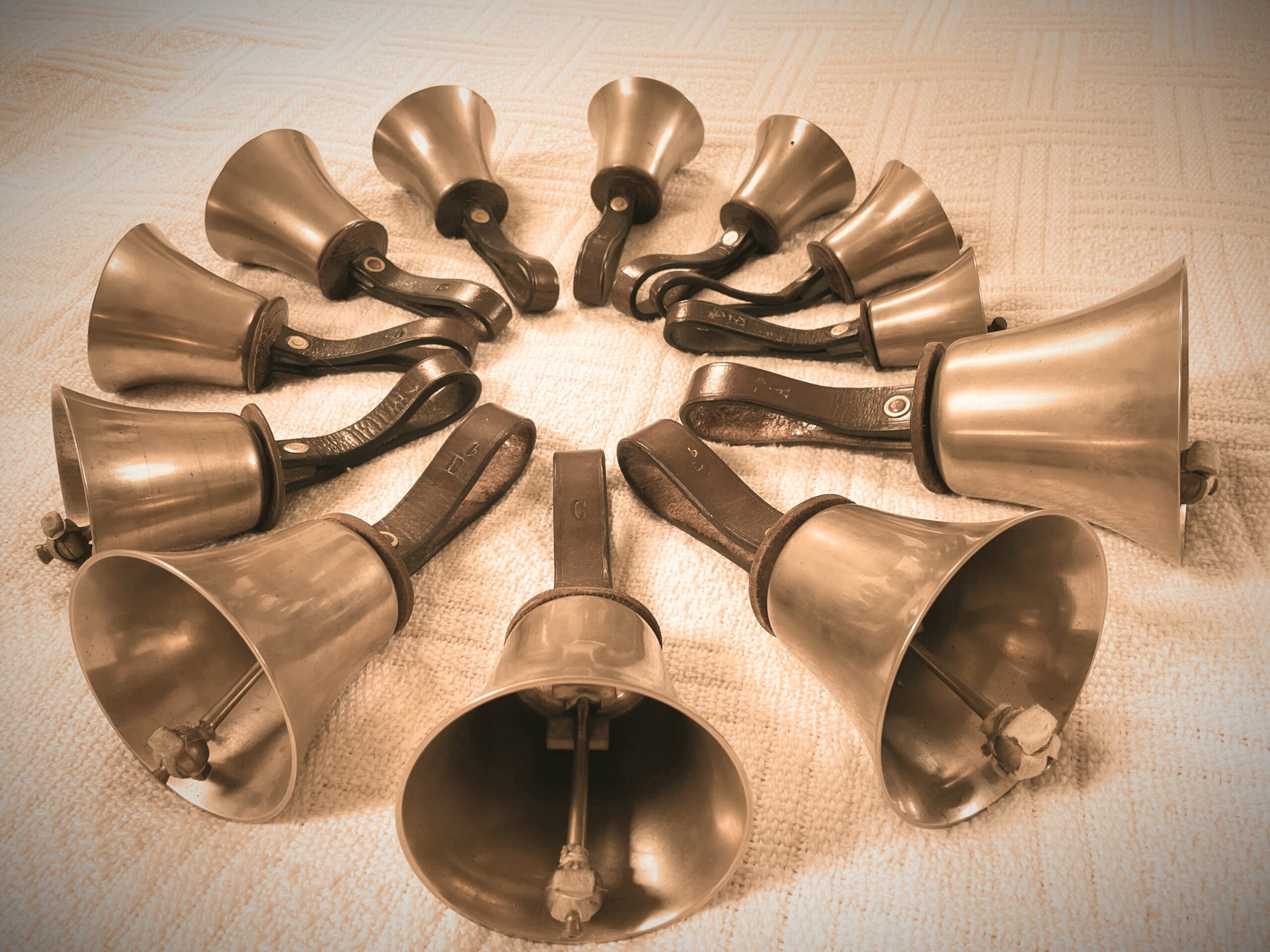
Handbell Ringing
How it all works...
Many towers will have a set of handbells lurking in some dark corner of the tower. Often they lie unloved and used… so why not get them out and start using them!
Most basic sets will be a diatonic ring of 12 bells… These sets are intended for change ringing, but it is also possible to use these bells for tune ringing and this can be useful way to encourage others into the tower and to take our ringing activities out to meet the church congregation or general public at community events.
Specialist tune ring groups will have much large sets… possibly running to 60+ bells that are chromatically tuned… These will range from tiny ones perhaps of 5cm diameter, right up to enormous bass bells that are closer to 40cm in diameter! These sets will be worth many thousands of pounds too and come packed in several large travel chests!
If you are new to handbells, this page will provide some background information about how to use your handbells.
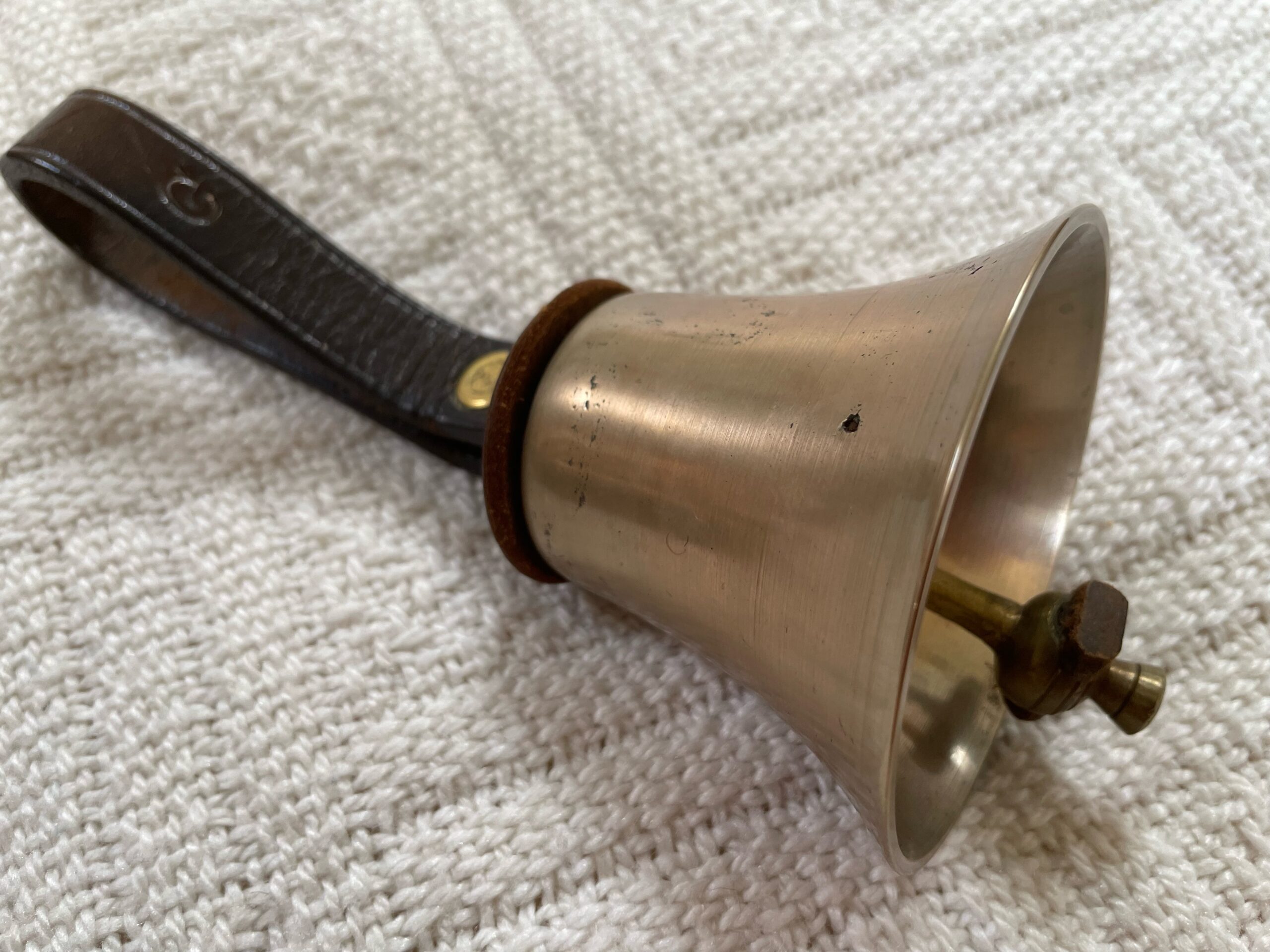
Handbells
Handbell are delicate and beautifully crafted things. Their design and manufacture is very precise, so they are very expensive items when put in a matched set… and not easy to repair or replace. It is therefore important to look after them carefully..
- Do not touch the metal. Your skin’s natural oils will corrode the it.
Do not polish them with chemicals. Repeated polishing will gradually dissolve and wear away the metal and make them out of tune.
Try not to let them bang together. They can be easily dented, chipped or cracked… This will obviously render them useless and require very expensive repairs.!
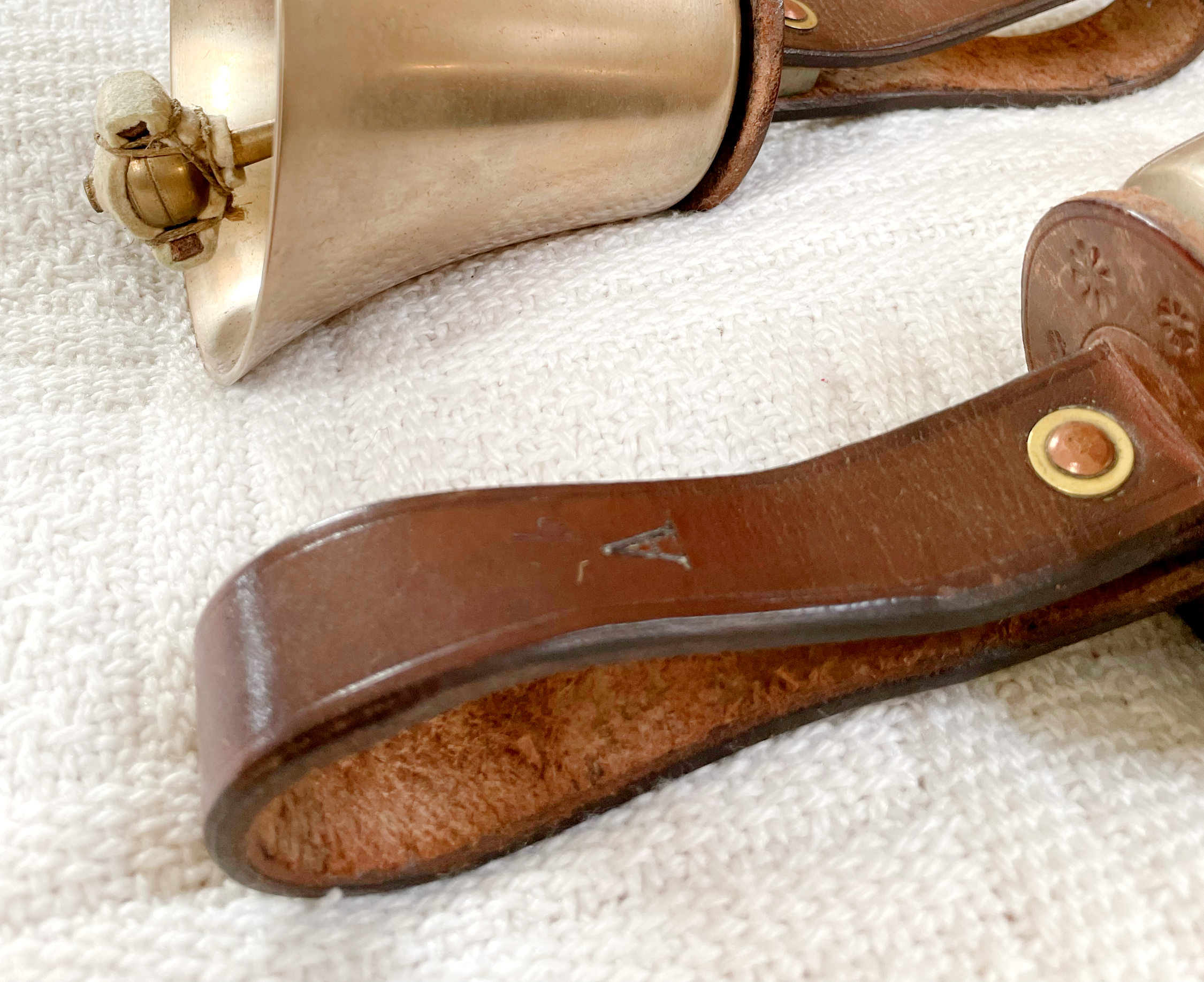
Pitch
Each bell has its own musical pitch or note. The bells are tuned to either a diatonic or chromatic scale. The note of the bell will be engraved into the leather strap. Different sets of bells may start and end on different notes, so will not generally be interchangeable.
Chromatic sets tend to be much larger and include all black and white notes (as per a piano) within their range. This allows much more flexibility and to work in almost any key, which is ideal for tune ringing.
Diatonic sets are much more common and are intended for change ringing. It will only include notes suitable to work in one single major key. Because many tunes will modulate from one key to another, these sets will be much more limited in which tunes can be played.
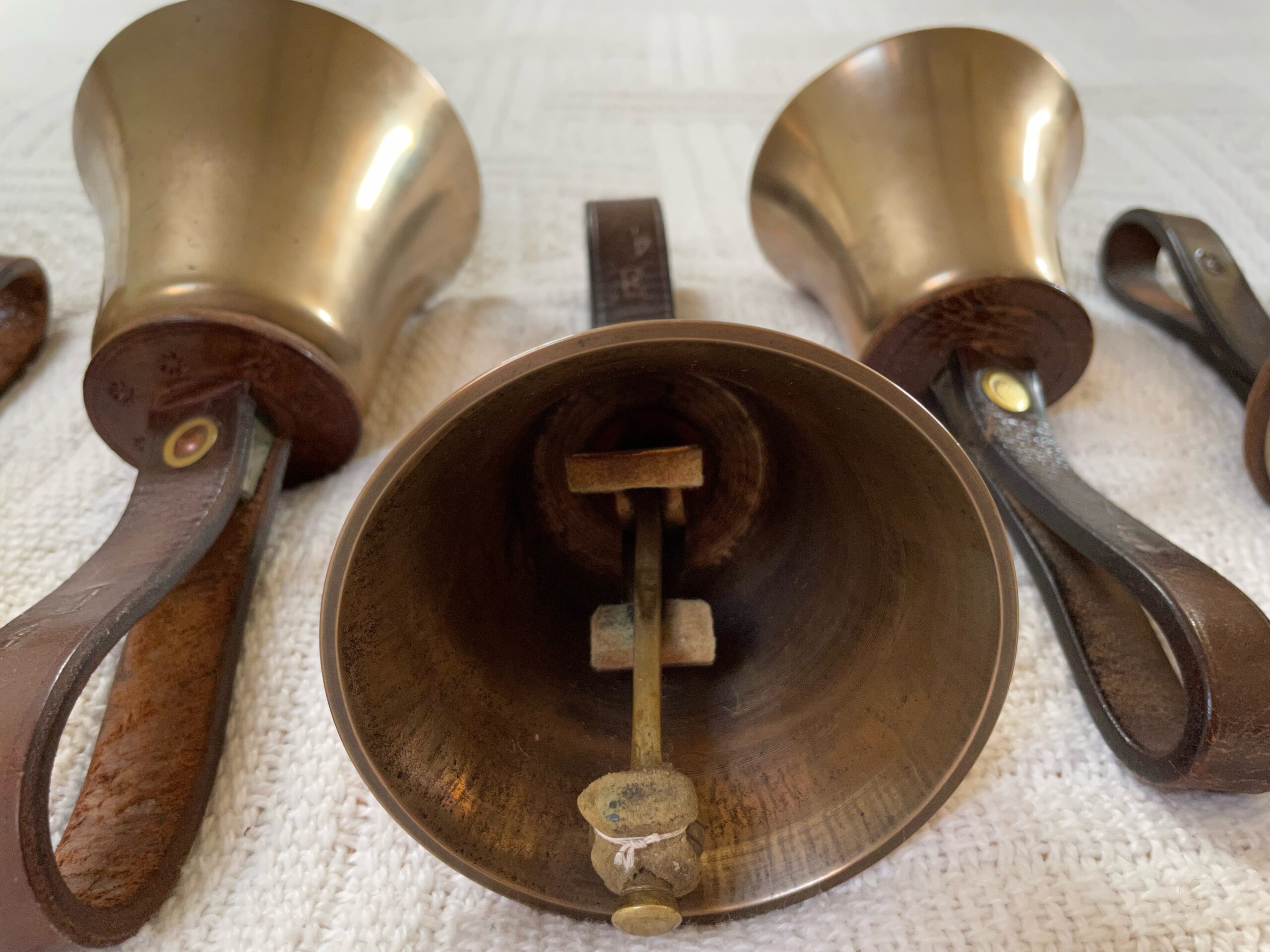
The Mechanism
Inside a handbell, you will find the clapper. It is made of brass and is carefully hinged so it can only move in one direction. This hinge will also be aligned with the leather strap.
Handbells do not strike metal to metal and have large chunks of very thick leather inserted into the ball of the clapper to strike against the bell itself…. This gives the bells a very soft and mellow tone. The leather strikers may in turn, also be covered by a thinner leather sheet which is tied in place. This will help keep things in place when the leather gets older and shrinks a little.
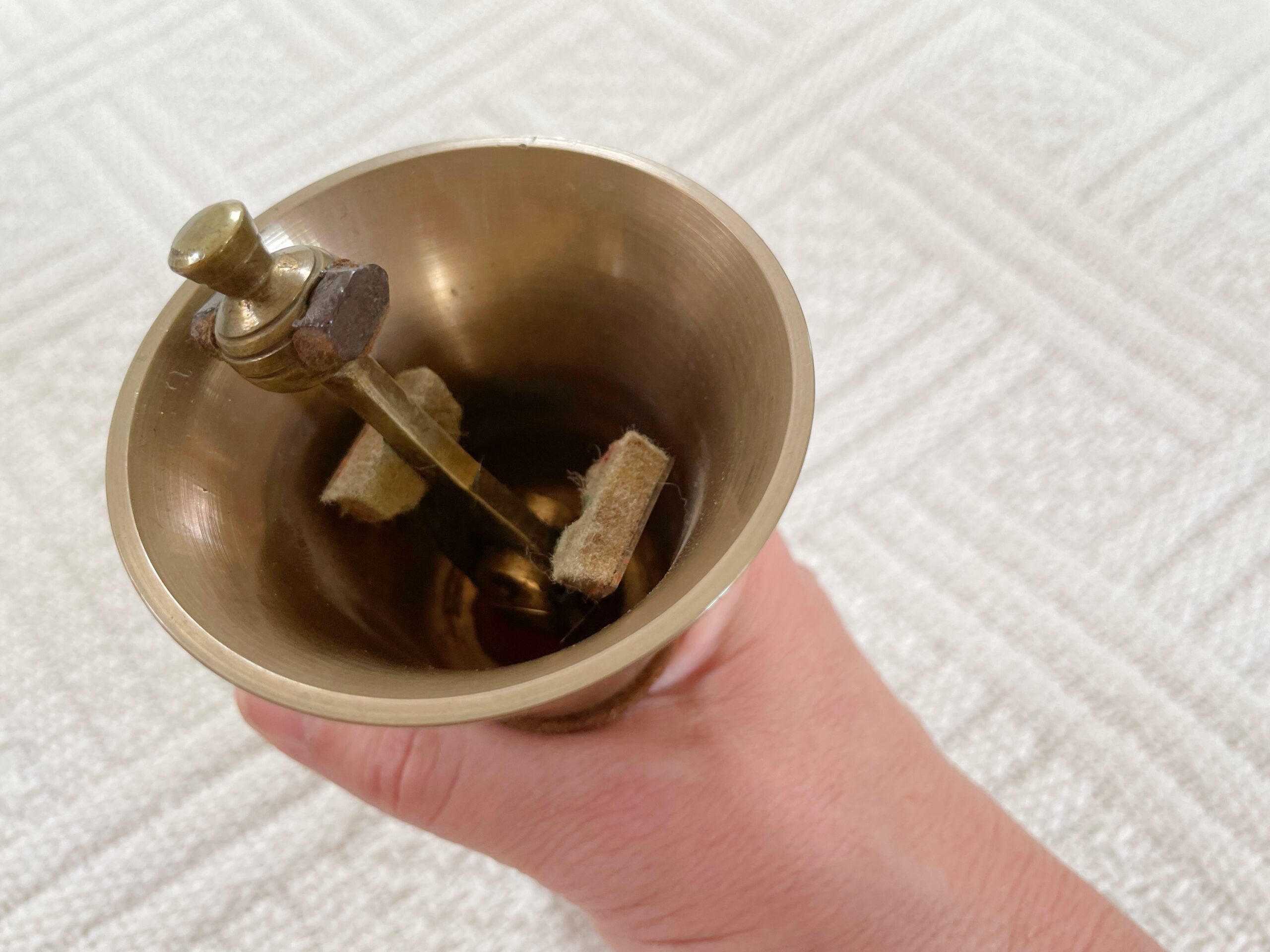
Springs
Inside each bell, you will find two metal plates covered in thick felt. They are riveted on to the clapper’s hinge. These are metal springs to stop the clapper from staying in contact with the bell, but will bend enough when you flick the clapper to allow it to strike. This allows the bell to continue resonating after the strike.
In tune ringing, you can then damp (silence) the bell at the end of the note, by touching it against you clothes.
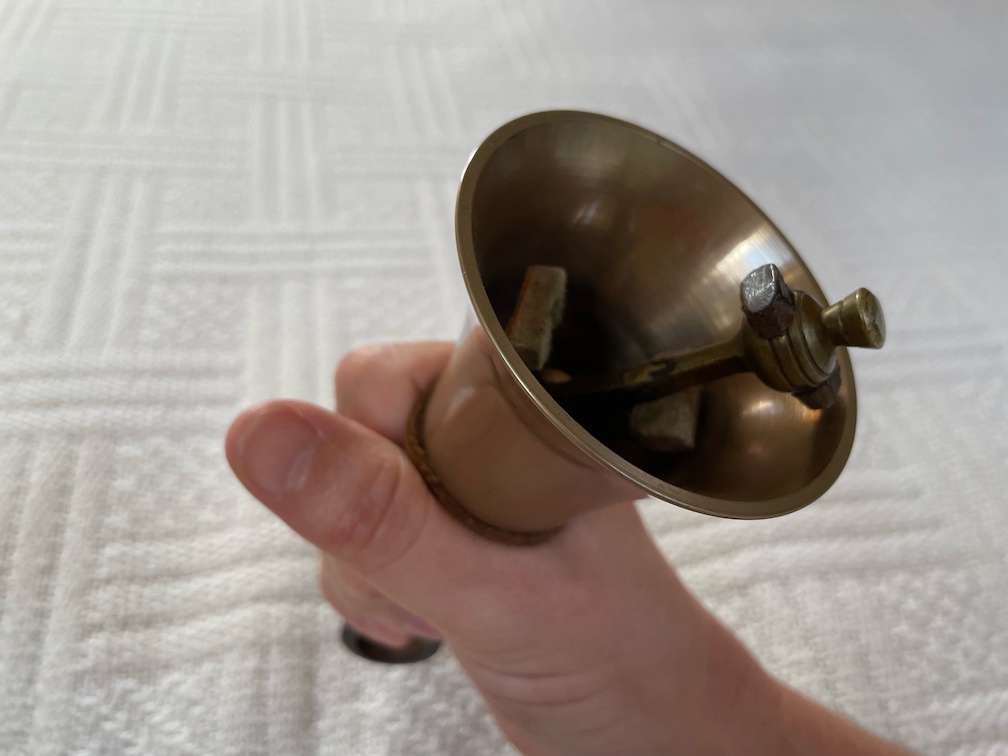
Holding a bell
When ringing handbells, you will normally be given two bells…. one for each hand. Each bell should be held in a firm grip around the leather (handle), with the top of the hand snug against the leather disc which sits bellow the crown of the bell.
Make sure the bell is rigidly controlled and moves with your wrist… The leather handle should not be bending, twisting or slipping.
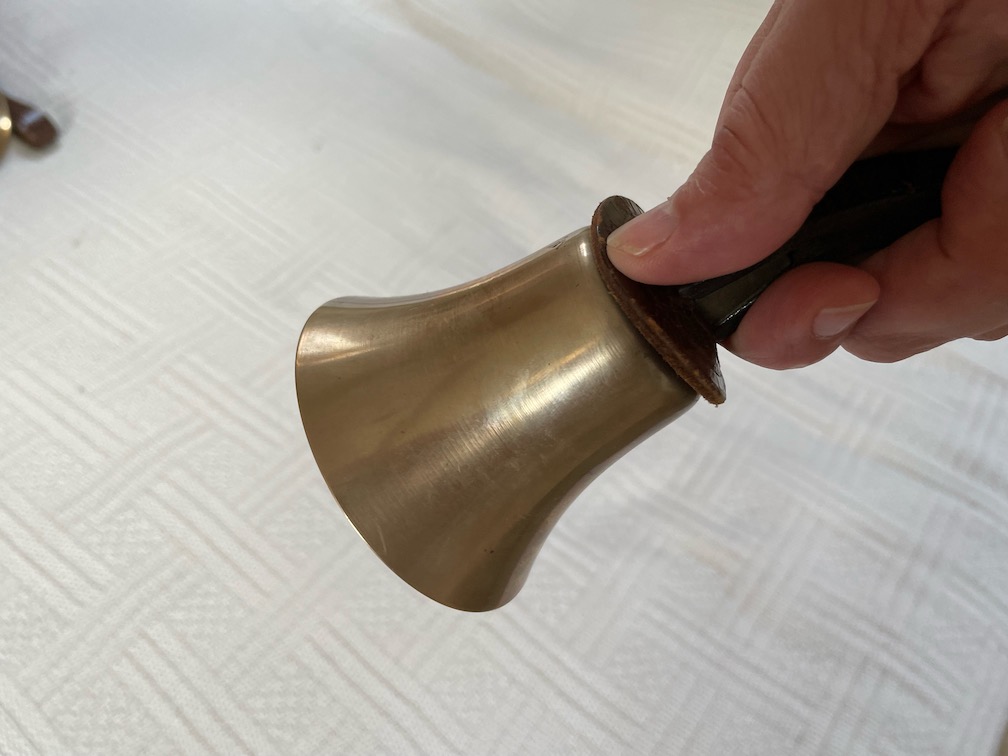
Change Ringing
When Change Ringing, the bells mimic their big sisters in the tower. The bells are rung alternately with a flick forwards/downwards, followed by a flick back/upwards to ring on the alternate side of the bell. This is very similar to the hand stroke/backstroke pulls which are used in ‘full circle’ ringing. It is the flicking of the wrist alternately forwards or backwards that rings the bell.
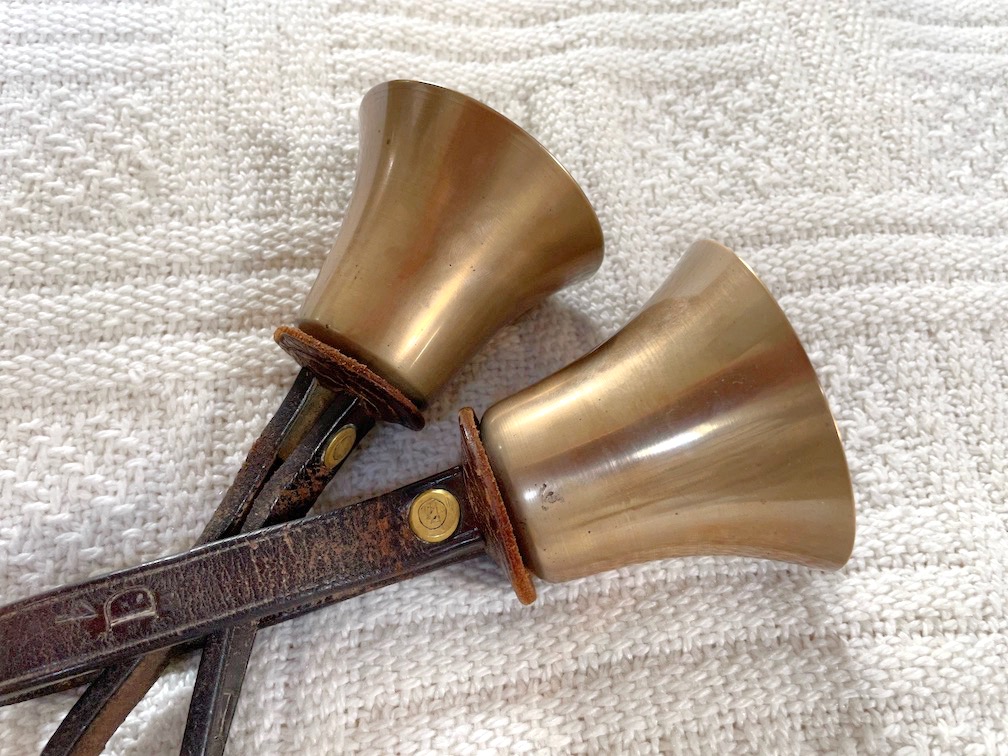
Two in hand...
It is quite possible to ring two bells in each hand:. a total of four bells per ringer! This is because the clappers only move in one direction. If the bells are held at 90° to each other, then one clapper will swing sideways and the other forwards and backwards.
To ring ‘Two in Hand’, put the leather strap of the smaller bell through the middle of the larger bell’s strap. The straps should be at 90° to each other.
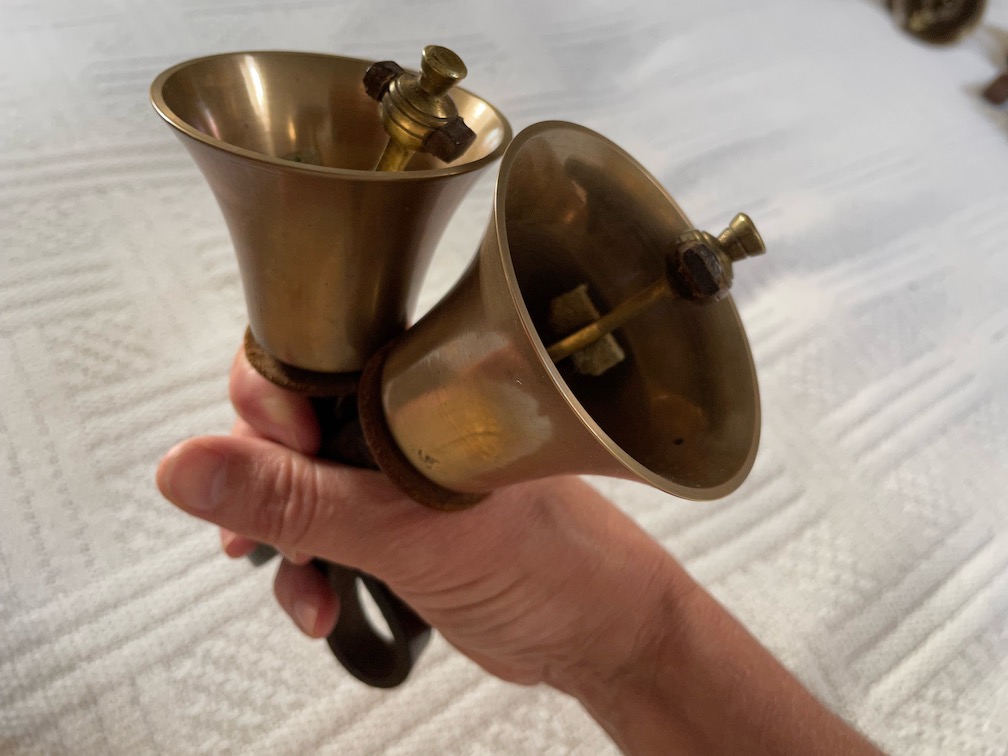
Holding two bells
If you ring ‘Two in Hand’, you will ring the larger bell by flicking/rotating your wrist sideways and the smaller bell by flicking forward in the normal way.
When you hold them, grip the bells tightly together so they cannot twist or move independently. Use the leather disc around the crown of one bell to stop them touching metal to metal.
Tablature
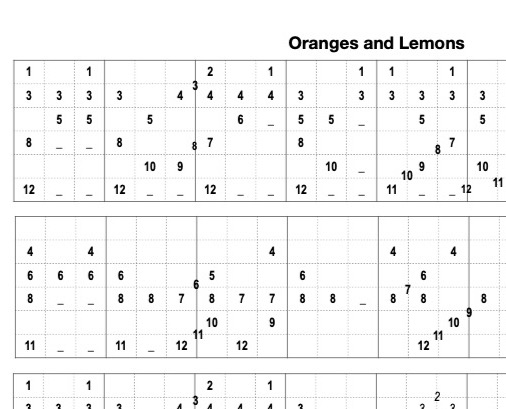
For those that do not read music, tablature can make tune ringing much more accessible. The bells will be numbered from the smallest (1) to the largest (n) and the music written on a grid. The smallest bells/numbers are at the top and the larger ones lower down. The tablature is drawn as a box. Solid lines dividing up the bars and dotted lines for the beats within the bar.
In the example above, the tune has 3 beats in each bar. As the beats are counted (1,2,3 – 1,2,3 -1,2,3 – etc.), you read along the grid and ring when your number appears in the column. If a number is placed halfway between columns, then the note is placed half way between beats… This is used for faster passages in the music… counting 1&2&3& – 1&2&3&…. can be helpful with this.
Methods

When ringing methods, it is normal to have two bells – one in each hand. For beginners, ringing just one might be quite enough!
Ringing two bells makes handbells very different from tower bells, because you need to be able to remember and follow two different patterns simultaneously.
And the relationship between the patterns will continually change too!
…It requires a different set of mental techniques which involve rhythm and understanding how the patterns interact.
With handbells it is possible to ring changes with much larger numbers than tower bells and that sound is quite amazing, as you hear the bells gently moving from front to back… yet not really moving either, because the distance is so far. It is like watching things happen through a very long lens…
Links for further information...
Free Resources
If you have a diatonic ring of 12 bells in your tower and want to try using them… our handbell resources page might be a good starting point… 38 pieces of music arranged for 12 diatonic bells for free download and a set of animated videos to make reading the music easy for anyone trying it for the first time!
Finding a Handbell Group
There are also many tune ringing groups and some have very large sets and ring to very high standards, others are just local church or tower groups like our own at Pebworth….
The Handbell ringers of Great Britain is a great place to start if you want to find one to join and the Making Music has a good selection of articles about handbells and hand bell groups.
Tune Ringing Videos
Tune ringing is also very popular in the US and there are many teams with big sets of bells and who are very good indeed…. Youtube has lots of excellent videos showing off the skills of these groups and below is a link to one such team. For more information about US handbells… try https://handbellmusicians.org/.
Method Ringing Videos
Below are links to ringing changes on very high numbers. The sound is quite magical as the patterns of bells moving up and down the order, gradually move past each other.
